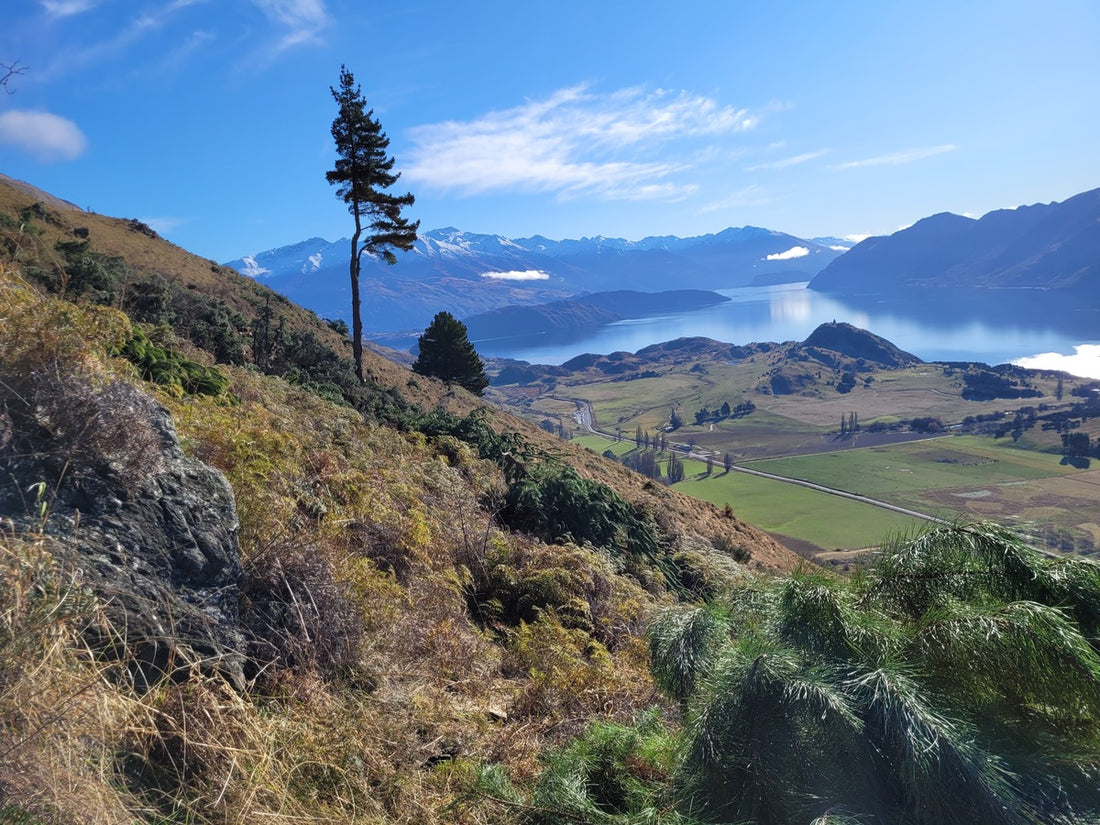(Republished from the Wanaka App, 1st August 2024)
A ‘Johnny come lately’ group of keen volunteers is having a big impact on the Upper Clutha environment.
The Upper Clutha Wilding Tree Group (UCWTG), which was formed in 2022, has just completed its first major operation with the help of funding from Love Wānaka.
Clearing wilding pines from Roys Peak was “an awkward job” because many of the trees had a “a very thick butt [base]”, UCWTG’s Arne Cleland told the Wānaka App.
Arne said the mature pines had begun spreading seedlings across the face of Roys Peak, and without their removal, the trees would have developed into a wilding forest on one of Wānaka’s iconic landscapes.
With the help of $10,000 from Love Wānaka, and three landowners on Roys Peak each contributing 20 percent of the cost of the operation on their land, the seed-spreading trees were removed.
The size of six of the trees and their proximity to fences required specialist contractor Wānaka Tree Care to remove the trees safely, ensuring the branches were cut up and left securely on the ground.
Arne said UCWTG volunteers will have to “thrash their way through the bracken” once every three years or so to cut down small seedlings that will continue to germinate.
The problem with wilding trees, Arne says, is that they can take over the landscape: “Douglas fir has the ability to cover every hill we see from Wānaka.”
Some species of trees displace native plants by shading them out.
Arne said now is the right time to tackle wilding trees in the Upper Clutha, to “preempt [spread] before it becomes a major - and costly issue”.
The group is already having an impact, he says.
“The whole idea is to work from the outside in, starting in the outlying areas, with Mt Maude in the centre.
Taking out seed source trees is the priority.
“That seed has not come off the landowner’s property. It really only takes one good wind event in the right direction at the right time of the year, and the seed travels across really easily.”
“It might only happen once and it’s enough to create a problem.”
UCWTG’s next operation is planned for spring: the removal of coning and near-coning wilding conifers on Stevenson’s Peninsula, and the group hopes to do the whole peninsula in one go.
“We’ve just got to keep at it. It’s a real long term plan,” Arne said, adding that success will be possible as long as the group continues to be funded through the Long Term Plans of the regional and district councils, and landowners continue to contribute 20 percent.
The UCWTG group has monthly working bees, for more information contact: info@uppercluthawildingtreegroup.co.nz

